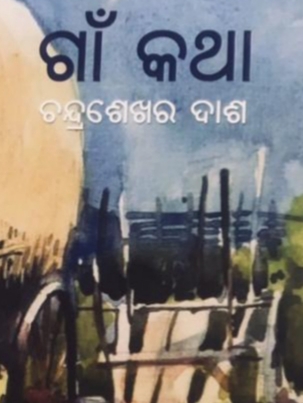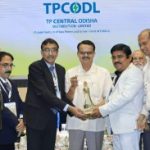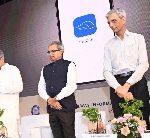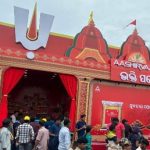By Trailokya Jena
I met Chandra Sekhar Dash as a service mate, a service from which we both stand superannuated, and since been a friend in life for four decades. As a Face Book friend for several years I’ve come to share memories of his past of which I particularly loved the ones centred around his village as I too grew up in my own in equivalent time to identify instantly with the characters, milieu and events depicted from time to time in his FB posts.
I was among many who shared, appreciated and encouraged his village reminiscences and urged him to compile those to publish as a book. So when he did publish the book in Odia, Gaan Katha, which I’d translate roughly as Village Tales, and sent me a signed copy earlier this month, I didn’t take long to finish reading it. The book contains 49 reminiscences, which I’d call ‘stories’ for lack of any better expression in my repertoire, mostly centred around his village situated 46 kms east of Bhubaneswar towards Puri that used to take better part of a day to reach from Cuttack due to geographical barriers of rivers and rivulets combined with primitive modes of transport. Now it takes less than an hour from Bhubaneswar, thanks to modern highway networks and Gram Sadak Yojnas.
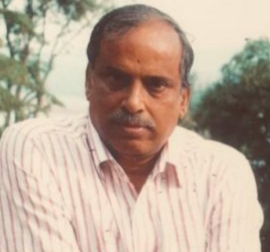
Some stories narrated from places outside his village quickly make connections with it either through characters or events woven into the larger tapestry of his birth place. In his prologue Dash states categorically that the stories neither describe his entire life nor the complete history of his village. There is no hint or explanation as to why there are 49 episodes, or stories, in the book. My best guess is perhaps the author has counted from 1971 when he left his village for College education to 2019, the year he compiled his pieces for publication. That makes it 49 exactly. Moreover, he doesn’t seem to follow any coherent logic or anything akin to Proustian stimuli (in Marcel Proust’s monumental work Remembrance of Things Past, the smell of madeleine cookie dipped in tea unleashed a string of memories in the protagonist which was quite involuntary stream of consciousness), not even chronology to detect a pattern. The choice of episodes and their times is quite arbitrary as the author is the sole arbiter in such memory driven narrative. And thereby hangs the challenge for the reviewer to construct a coherent meaning from episodic memories of a village constructed in the mind of the author who himself is a creation of the same village.
These 49 episodic memories randomly recollected by the author include some poignant emotional tales of village life in vignettes like homage to his primary educator the old village school teacher, suicides of an old mother and a young maiden distanced in time and shrouded in eternal mystery of life, ostracisation of a father who dared to send his daughter out of the village for higher education, the delight of wonderstruck village kids at their first sight of a motor cycle, the disastrous and corruption ridden digging of an artificial river designed to rid villages of accumulated flood water wreaking more havoc in inundating the same villages as supreme piece of irony, manifestation of Lord Jagannath in the form a floating wooden idol to land at the village in high flood to trigger a community enterprise in temple building, graphic details of two deaths from cholera painting the cruel and violent expelling of young lives from the village paradise, the saga of cultural, psychological and accounting trauma of partition of author’s age old family, the romance of the travails of inland letter through village post office system, the collective triumph of the village on the author topping the State Board Matriculation results, stress in the community following the marriage of the author into a family of lesser Brahmins, changing economic realities reversing the trend of generations of local villagers travelling to Calcutta for livelihood to engaging Bengali farm labourers in village paddy field to complete the circle of economic time to the definitive heralding of modern globalising trend in the village by way of exotic noodles and rolls replacing traditional village pakoda and samosa as choice of food in annual village fair.
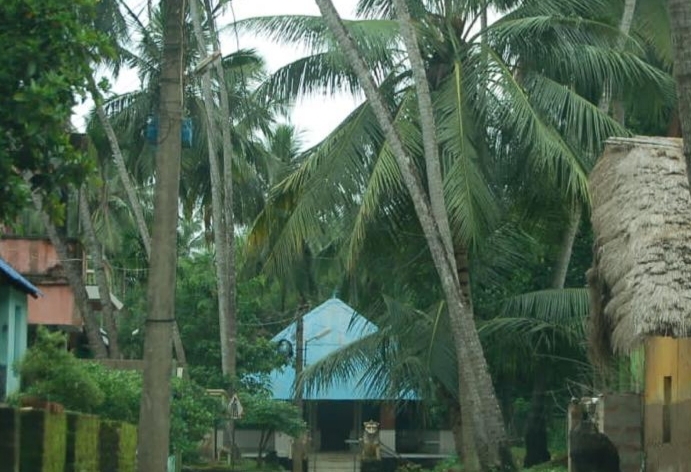
These human stories the author recounts from memory to drape over the village landscape are universal. You can enjoy it irrespective of your origin whether you grew up in a village or in a small, mid or big town. The stories would resonate with you provided you have enough empathy left for your fellow beings. The choice of theme and characters is as eccentric as it comes. The village serves as a pot in which the author churns his memory going repeatedly over and over its geographical contours and historical interdependencies of the inhabitants. People including the author perennially roll up and down trying to connect their lives and livelihoods to the nearby landmarks of Puri, Cuttack and Bhubaneswar further extended to Delhi, Kolkata and Mumbai where the author either studied or worked in later life. The stories serve as autobiographical memoir neither fully like documentaries or feature films but more like paintings the author choses to paint on his native landscape. You may say those paintings could have captured ‘x’ part rather than ‘y’ but the choice has to be the author’s whose overall endeavour has been like restoring an old moth eaten painting of village life in coastal Odisha from the late 1950s to mid 1980s when the old fabric permanently lost its usefulness and with that its existence.
Now the questions that arise are where do you place the book in the creative arena of literature, how authentic a picture it draws of contemporary rural Odisha, and what larger utility it can serve for Odia community. We may examine each of these three questions briefly.
The literary trend in recent times is the gradual displacement of the ‘novel’ by the ‘memoir’. The days of the great fictions might have passed. In stead of reading fiction about ordinary people(Novel) we are increasingly given to read non fiction about ordinary people(Memoir). The memoir might have displaced the novel as the literary genre of our age. We have come to the first person narrative of ordinary people in every day life, but also with a kind of omniscience in which authors view earlier experiences in the light of later ones. A narrative, if coherent enough, about a group people living or having lived within a defined milieu could be as telling as any work of fiction and to that extent a memoir could be interchangeable with a fiction. A village, a town or a city as a unifying theme of a novel is perfectly acceptable provided it possesses a sense of unity to a collection of tales. There are several instances in literary history to prove it. In modern literature(say since early twentieth twentieth century) we can look at three such works, James Joyce’s Dubliners(1914), Sherwood Anderson’s Winesburg, Ohio(1919) and R K Narayan’s Malgudi Days(1943), as these three great works of fiction are based on either imaginary or real geographical addresses inhabited by real people where certain character(s) unify the narrative thereby creating memories for the future. In case of Village Tales, the author is the unifying figure who goes on a mental time travel to his village to create characters out of his autobiographical memory. ‘Life can only be understood backwards, but it must be lived forwards’ said Soren Kierkegaard which is applicable to both sets of work.
The other two questions can be taken up together. The author was born in the mid 1950s and gained retainable consciousness from the early 1960s. His life was exclusively spent in the village till 1971 when he left for Puri town for his early college education and subsequently for Cuttack for his graduation (he topped the State Matriculation Exam in 1971, a great feat in our times that is depicted in one of the stories). There after he left for Delhi to do his post graduation from where he transitioned into professional career that took him to many corners of the country. His roots, therefore, remained firmly in his village from where he drew water till he left for Delhi in 1975.
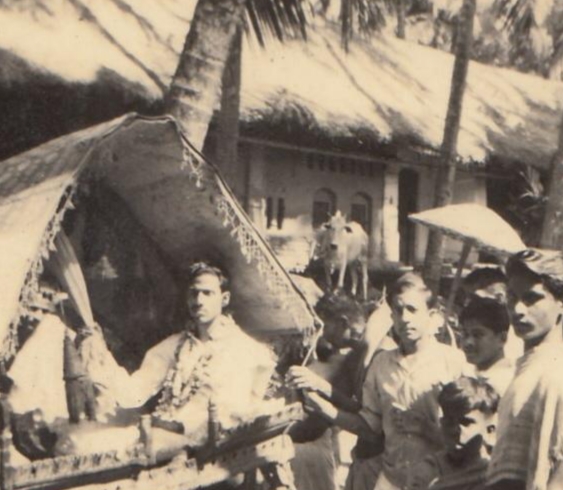
His reminiscences are far more sharp and defined about his village for those 15 years, a period very crucial in Odisha literary history when a gradual but unmistakable thematic shift replaced villages by towns and cities as writers’ world. Towards the end of the 1960s all major writers moved focus out of the villages and its traditional ways of life. Exactly when and why that happened would be a separate debate, but the fact remains that popular literature ceased to provide pictures of rural lives. Besides, villages got transformed beyond recognition, specifically with the advent of the new century. Technological changes, modern transport and communication systems, globalisation of economy and culture particularly that of the media, all put together erased the centuries old way of life in the villages evoking the romantic imagery of Oliver Goldsmith’s Deserted Village of rapidly industrialising England. In our case the desertion of the villages are less of physical desertion than a desertion in the soul. For me the defining story in the book is New Age which captures the slow but sure transformation of village from tradition to modernity through the introduction of watch, bicycle, radio, motorcycle, transistor, electricity, motor vehicles, telephone, television, mobile phone and ultimately internet service. It reflects the backwardness and inaccessibility of Dash’s, for that matter most Odia, village that things started to happen only around the late 1960s. The vignettes of lives before, during and after major changes in rural Odisha would be the invaluable contribution of the book particularly at a time when creative literature has long ceased to dwell on these details leaving the ground open to paltry statistics based academic researches with their narrow and need based focus. Village Tales, therefore, is a chronicle of constant dialogue of our relationship with the past- our relationship with people of the past and our relationship with our past physical environment- that may serve as a delight to historians and sociologists as also to the future generations of Odias living wherever.
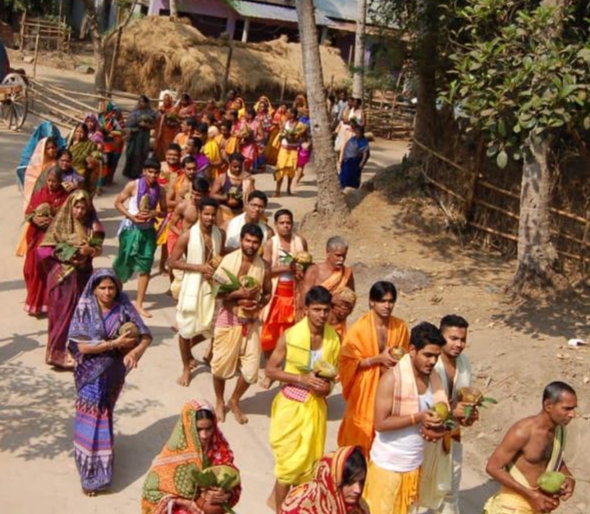
There are, however, some critical inadequacies in these reminiscences. The author has avoided unpleasant collective memories of the village while recounting at great length some of his own personal unpleasant moments where human elements are not involved. The tales do not include any outright human villain, only nature has been shown as villain in the form of floods, cyclones or epidemics. Over half a century of any village history would surely contain tales of crime, violence, debuachery, love, passion, infidelity, betrayal, and varying forms of physical awakenings. The absence of any tale of these including that of author’s own awakening somewhat dehumanises the village community to certain extent. He has also scrupulously avoided the politics of the village, an aspect that has seen ugly changes in rural Odisha. In his quest to find the sweet ones from the mango tree that is his village, he has deliberately glossed over the many deformed fruits to have fallen around the ground. To that extent he comes across as a passive voyeur of a protagonist who revisits village life treating it as a mine to collect precious metals in form of memories scrupulously avoiding the dirt and filth inevitably present therein. The repeated romanticisation of most of his memories chips at the excellent realism he captures about the general aspects of life in the village. In sheer atmospheric his work invokes the celebrated portrayal of village by the great Odia poet Sachi Routray, recipient of 1986 Gyan Pith award, which begins with the line roughly translated ‘cute is my village even if it doesn’t find a place in geography books….’.
Chandra Sekhar Dash’s memoir is a must read for those who have grown up in villages anywhere as also for those who do not know what villages are, particularly the new generation of Odias. I understand that the English translation of the book is round the corner. Dash’s village has the potential to become our own Winesburg, Ohio a hundred years after Sherwood Anderson published his highly influential book in the USA.
(Jena is former Principal Chief Commissioner Income Tax)


